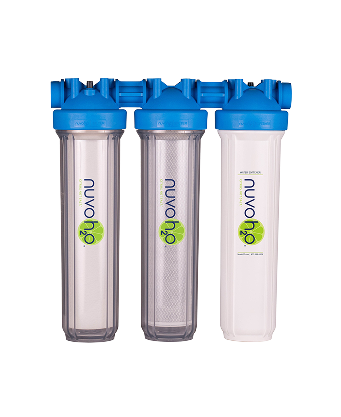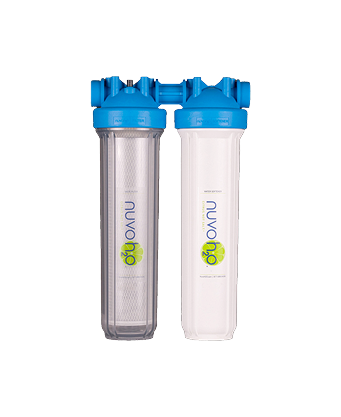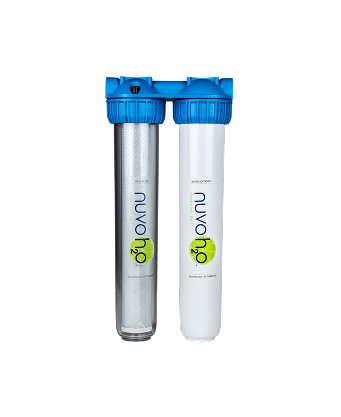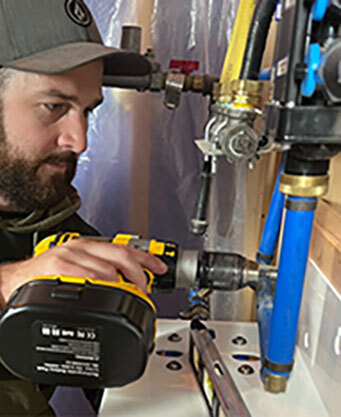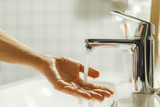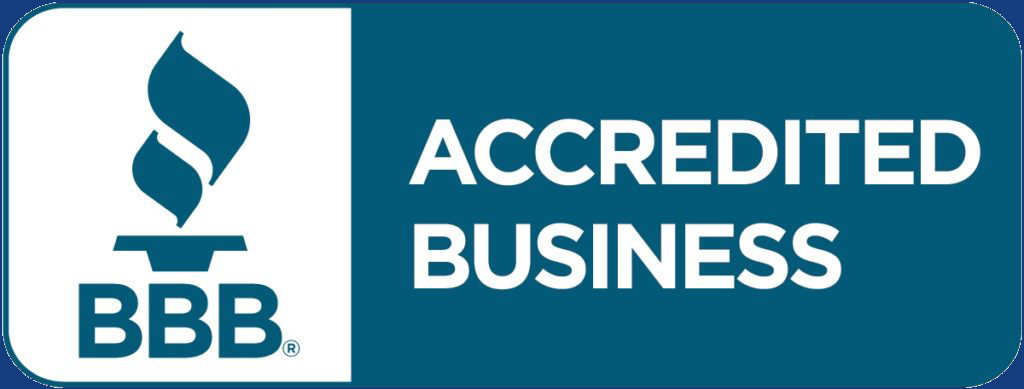
How to Protect Your Coffee Maker from Hard Water Buildup
2nd Sep 2025
If your morning brew tastes a little “off” or your coffee maker seems slower than it used to be, hard water might be the reason. Those dissolved minerals in your tap water, mainly calcium and magnesium, don’t just leave spots on your glasses and shower door. They can also cause calcium buildup in your coffee maker, affecting flavor, performance, and even the lifespan of your machine.
In this guide, we’ll cover:
- Why hard water and coffee makers don’t mix
- How to clean calcium buildup in your coffee maker (and its water reservoir)
- How to prevent scale so your machine lasts longer
- Why a salt-free water softener can be the best fix for the problem
Why Hard Water Wrecks Your Coffee Maker
When hard water is heated, the minerals precipitate out and form solid deposits, commonly called limescale. Inside your coffee machine, that calcium buildup can:
- Clog internal tubing and water lines
- Insulate heating elements so water never reaches the right brewing temperature
- Alter extraction, giving your coffee a flat or metallic taste
- Shorten your machine’s lifespan by wearing down components
The harder your water, the faster the buildup happens. If you live in a region with high mineral content, choosing the best coffee maker for hard water or pairing your machine with a water treatment system is essential.
If you want to learn more about the hidden costs of hard water on the rest of your home, check out our article The Cost of Hard Water.
Signs Your Coffee Maker Has Calcium Buildup
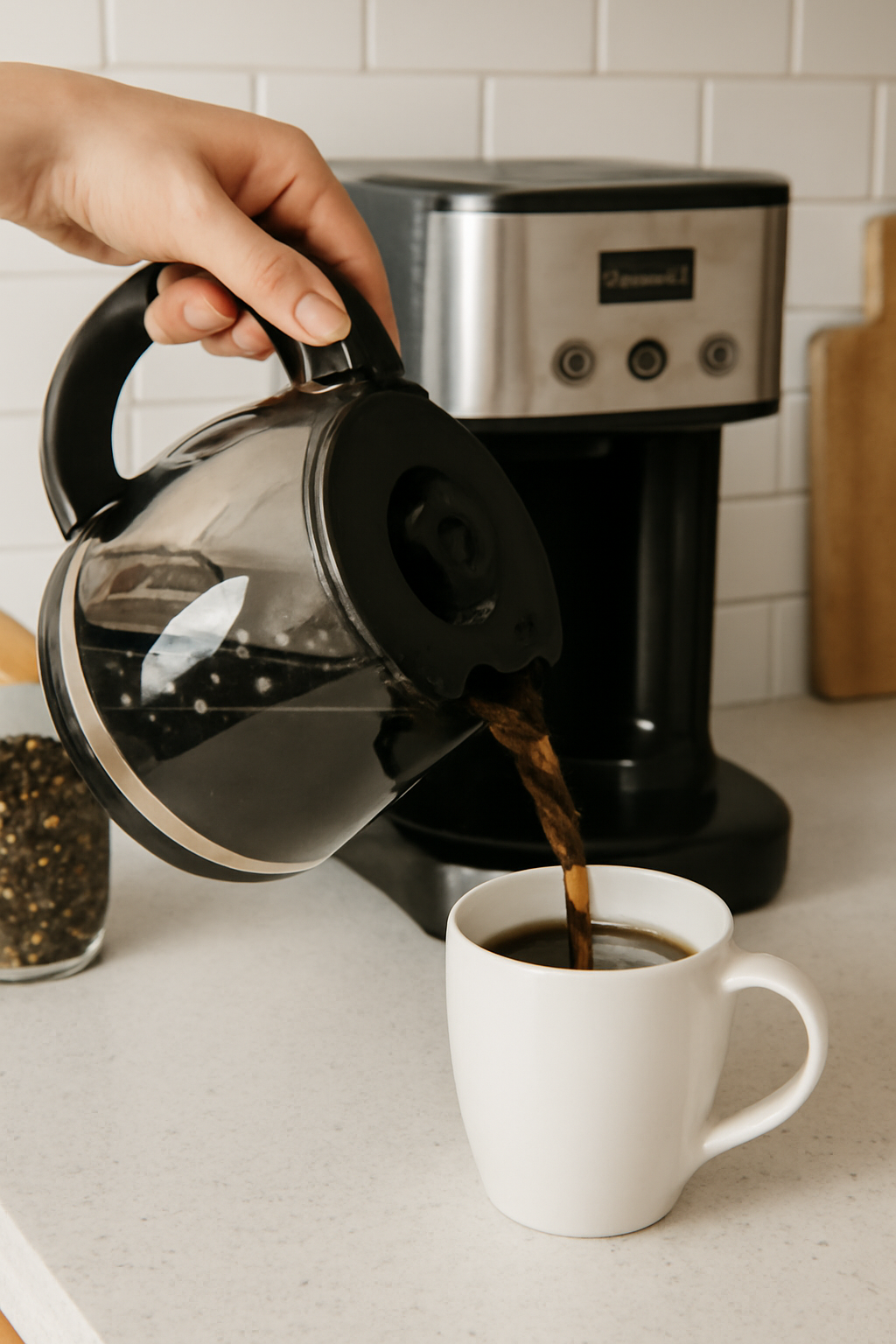
You might have hard water damage if you notice:
- Slower brew times
- Lukewarm coffee
- White, chalky deposits on or around the water outlet
- Odd or bitter taste, even after cleaning
- Mineral flakes in your cup
Even if your coffee still tastes okay, these symptoms are early warning signs that your machine is working harder than it should. Left untreated, calcium buildup can lead to costly repairs or the need to replace your coffee maker entirely.
If you spot these symptoms, it’s time to learn how to clean calcium buildup in a coffee maker before the damage gets worse.
How to Clean Calcium Buildup in a Coffee Maker
1. Descale with a Coffee Maker Cleaning Solution
Most manufacturers recommend using a descaling or coffee maker cleaning solution every 1–3 months. These solutions dissolve calcium carbonate deposits so water can flow freely again.
- Empty the machine and water tank.
- Fill the reservoir with a mix of descaling solution and water (follow product directions).
- Run a brew cycle, then let the machine sit for 15–20 minutes.
- Rinse thoroughly by running 2–3 full cycles of fresh water.
2. How to Clean Coffee Maker Water Reservoirs and Tanks
If you’ve got visible buildup in your water tank, here’s how to clean coffee maker water reservoir areas without damaging your machine:
- Remove the reservoir if possible.
- Mix warm water with a mild detergent or vinegar solution.
- Scrub gently with a soft sponge or bottle brush, and avoid anything abrasive that can scratch the surface.
- Rinse until no residue or smell remains.
If the reservoir isn’t removable, pour the cleaning mix inside, let it sit, then rinse by running plain water cycles.
Choosing the Best Coffee Maker for Hard Water
If you know your home’s water is hard, look for machines labeled “limescale resistant” or with removable components for easier cleaning. Features like stainless steel boilers and built-in filtration help, but even the best coffee makers for hard water still benefit from treated water.
The Long-Term Solution: Treat Your Water at the Source
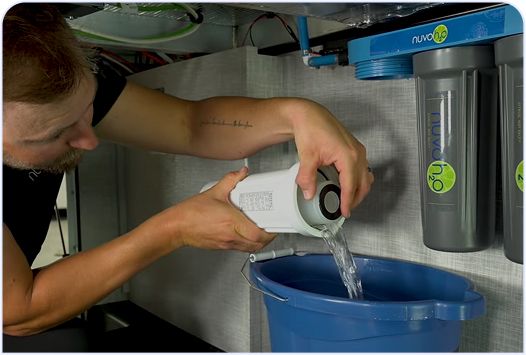
Cleaning your machine every few weeks is effective, but it’s a lot of work. If you want to stop the problem before it starts, the most reliable fix is to soften your water.
A salt-free softener, like NuvoH2O’s Whole Home Trio system, prevents calcium and magnesium from forming scale in the first place. That means:
- No more weekly scrubbing of your coffee maker
- Better-tasting coffee (and tea, soups, and pasta water)
- Longer appliance life—from coffee makers to dishwashers
- No salt, no slippery water, and no added chemicals
This system doesn’t just work for your coffee pot, but it treats the water for your whole home, protecting every tap, fixture, and appliance.
Final Brew: Keep Your Coffee Maker Happy
If you want to enjoy your morning coffee without worrying about mineral buildup, follow a simple routine:
- Descale every 1–3 months (more often if you have very hard water)
- Keep the water reservoir clean
- Use filtered or softened water whenever possible
Hard water won’t hurt you, but it will slowly destroy your coffee machine. Whether you choose a coffee maker cleaning solution or go straight for a coffee maker for hard water setup, the key is consistency.
Treat your water, and your brewer will reward you with better flavor and a longer life.

